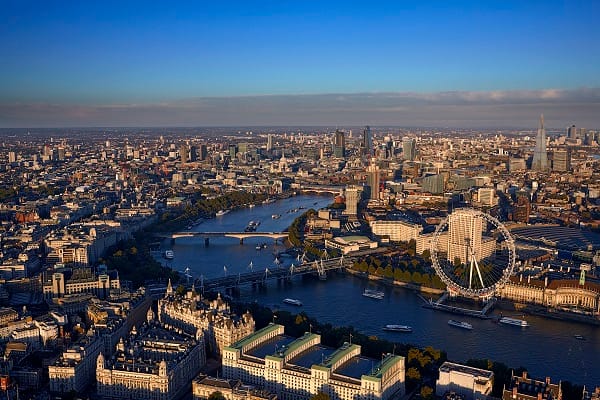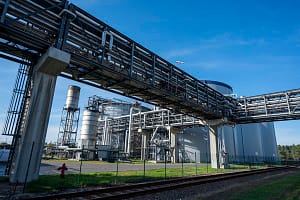London is one of the largest and wealthiest cities in the world, but in order to retain its status as a centre for business, culture and technology, its urban landscape must undergo constant redevelopment.
No wonder then that the capital is home to the largest proportion of demolition companies in the UK.
Here, Simon Barlow, the Managing Director, and Founder of Rye Demolition, discusses why demolition is a vital activity in the city and the measures needed to ensure it is undertaken safely with minimal impact to the environment and local communities.
- How did you get started in demolition?
When I was 16 I started out in the industry as a machine operator, and progressed from there with exposure to different parts of demolition, so I had a good understanding of how programmes ran. I was extremely lucky to have initially been employed by someone who believed in developing young people and this is something I now advocate for Rye Demolition.
Having learnt a great deal through training and on the job experience, I set up my own company, Rye Plant Hire in 1994, before expanding operations to encompass full-service demolition, which is what we now provide to our many clients.
- Tell us about some of Rye’s recent London projects?
We are extremely proud to be able to work on some iconic projects across the capital.
In Harrow we have been working for several years demolishing the old Kodak factory and remediating the site for construction of modern housing. This is a classic regeneration project, making better use of old facilities no longer fit for modern ways of living and working.
Closer to the centre of the city, we are currently working on the demolition of a 16-storey office block in Barking, using a methodology called top down demolition, which requires lifting machinery on to the top of building and deconstructing from within, one floor at a time. This helps contain dust and debris from the surrounding areas.
Another project we are working on is in Poplar, where various buildings are neither safe, efficient nor suited to modern living. It was deemed that demolition and regeneration of the area was the most viable solution to support modern expectations. Once we have completed our work there are plans to develop significant new volumes of much needed housing, over 100 shops, restaurants, other leisure facilities and a new Chrisp Street market.
This is typical of many projects we are bidding for now-a-days where there is a need to level up standards for residents and businesses.
- How does demolition contribute to the continuing success of London’s built environment?
The reality is that society’s way of living has shifted from when many existing buildings were constructed. There is a greater demand for housing, the high street is changing, and energy efficiency has become ever more important. Alongside this we can’t forget that understanding of safety has changed with the move away from materials like asbestos.
If London is to be heralded as a modern, thriving metropolis, as it deserves, then the built environment must continue to evolve, while respecting and promoting its history.
Without demolition the changes required for modern living and business can’t be achieved.
Let’s be clear though, this doesn’t mean that everything must be demolished. In fact the demolition sector, and us as a company, is focused on working with architects and developers to identify the most efficient, effective, and sustainable methods of development. Sometimes this means soft stripping and refurbishment, whilst on other occasions demolition is the only viable route. This is especially true when trying to modernise aged buildings that built in a way that don’t support energy efficient use or are riddled with asbestos.
Decisions such as the recent one by Michael Gove to stop the demolition of the M&S store on Oxford Street, presents a series of issues that fail to recognise the complex issues that face the built environment sector.
Demolition is needed and is a modern, sophisticated industry that has adapted to the challenges the modern world presents.
- The capital is one of the most densely populated cities in the world. What considerations must be taken to ensure the health and safety of works and local communities.
The demolition and construction industries are two of the most highly regulated industries in relation to health and safety, and rightly so.
As a member of the National Federation of Demolition Contractors (NFDC), we conform to the highest standards of safety and are regularly audited by them. We take very seriously our health and safety obligations to our staff, clients and the communities in which we work, employing experienced safety professionals across every project.
On projects in such densely populated areas there are a number of measures that have to be applied. We work with clients and local authorities to minimise disruption as far as possible in relation to noise, dust and vibration pollution by deploying monitoring and mitigating practices.
Significant effort goes into planning the hoardings, scaffolding and wrapping of sites to prevent materials falling outside the site.
When working on tight sites in London, and other cities, it is often the case that we are dismantling structures adjoining other buildings, so we work with various specialists to ensure their integrity is maintained, often implementing temporary support works.
Another consideration is air pollution, and at Rye, we only use HVO fuel, that produces around 90% fewer particulate emissions than diesel.
- London is full of beautiful historic buildings that unfortunately are in severe states of disrepair. What considerations should be taken into account when deciding to retain or demolish them?
We are as keen as everyone to preserve heritage buildings – they are part of our collective history, and so we work closely with developers to identify the best route forward.
If materials such as asbestos or corroded materials and structures present a particular issue that is beyond salvation, then that is a key factor in deciding the path forward.
Clearly, technologies have advanced in how buildings are made energy efficient and sometimes the existing structure will just not support these methods.
Despite these factors it could be that many heritage buildings can be adapted to modern standards by retaining the façade and redeveloping the structures behind and within. This may still require demolition of hidden parts of the building whilst preserving what people see.
In other instances however, the structure may just not allow this approach to be deployed and so demolition ends up being the only viable option.






Leave a Comment